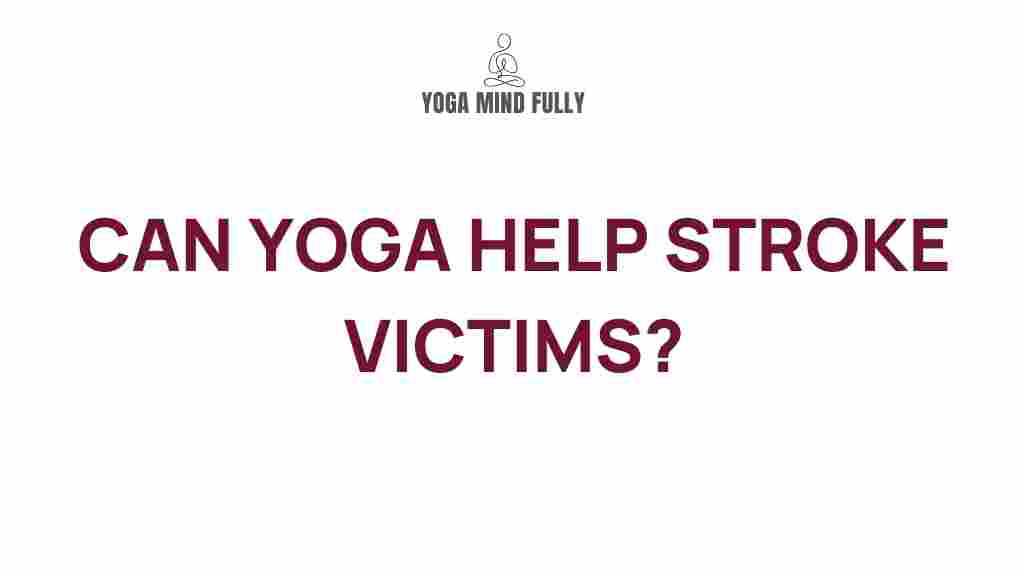Unlocking the Healing Power of Yoga for Stroke Survivors
Stroke is one of the leading causes of disability worldwide, often leaving survivors with physical and cognitive impairments. While rehabilitation therapies like physical therapy and speech therapy play a critical role in recovery, a complementary practice such as yoga can significantly enhance healing. This ancient practice, known for its physical postures and mindfulness techniques, has been shown to offer stroke survivors numerous benefits, including improved mobility, reduced stress, and better quality of life. In this article, we will delve into the healing power of yoga and how it can be used as an effective tool for stroke recovery.
The Benefits of Yoga for Stroke Survivors
Yoga is much more than just physical exercise; it also focuses on mental clarity, balance, and breathwork. For stroke survivors, the benefits of yoga can be both profound and multi-faceted. Below are some of the ways yoga can aid in recovery:
- Improved Mobility and Flexibility: Yoga poses help to stretch and strengthen muscles, improving flexibility and mobility in affected limbs.
- Enhanced Balance and Coordination: Many yoga poses require focus and balance, which can help stroke survivors improve their coordination and stability.
- Stress Reduction and Emotional Well-Being: Yoga emphasizes deep breathing and mindfulness, which can significantly reduce stress and anxiety, fostering a sense of calm and well-being.
- Increased Circulation: The physical movements in yoga promote blood flow, which is essential for healing and recovery after a stroke.
- Boosted Cognitive Function: Practices like meditation and breathing exercises can help improve cognitive functions such as memory, focus, and mental clarity.
Getting Started with Yoga: A Step-by-Step Guide
For stroke survivors, it is important to approach yoga gently, especially if they are new to the practice or dealing with specific physical challenges. Here is a step-by-step guide to help you get started:
Step 1: Consult Your Healthcare Provider
Before beginning any yoga practice, it’s crucial to consult with a doctor or physical therapist to ensure that yoga is a safe and appropriate activity for you, especially if you have specific physical limitations.
Step 2: Choose the Right Type of Yoga
Not all yoga practices are the same. For stroke survivors, gentle yoga or restorative yoga can be the best choices. These types of yoga focus on gentle movements, stretching, and mindfulness without placing too much strain on the body. Research shows that these types of yoga can be especially beneficial for those with limited mobility.
Step 3: Begin with Basic Breathing Techniques
Before focusing on physical poses, start by practicing basic yoga breathing exercises, known as pranayama. The most common breathing technique is diaphragmatic breathing, which involves deep inhales and exhales that help reduce stress and calm the mind.
Step 4: Focus on Gentle Poses
Start with simple poses such as the Cat-Cow Stretch, Child’s Pose, and Seated Forward Fold. These positions are easy to perform and can help stretch muscles, increase circulation, and improve flexibility. It’s important to listen to your body and avoid any movements that cause discomfort or pain.
Step 5: Incorporate Meditation and Mindfulness
Meditation is a key component of yoga that can support emotional healing. Spend a few minutes focusing on your breath, letting go of any worries or negative thoughts. Practicing mindfulness can help improve emotional resilience and foster a positive mindset, which is important during the stroke recovery process.
Yoga Poses for Stroke Recovery
Here are some effective yoga poses that stroke survivors can practice to promote healing and improve physical abilities:
- Mountain Pose (Tadasana): This simple standing pose can improve posture and balance.
- Chair Pose (Utkatasana): A seated version of a squat that builds strength in the legs and core.
- Reclining Leg Stretch (Supta Padangusthasana): This gentle stretch targets the hamstrings and helps increase flexibility.
- Bridge Pose (Setu Bandhasana): This pose strengthens the lower back, hips, and legs while improving circulation.
- Corpse Pose (Savasana): A resting pose to promote deep relaxation and recovery.
Common Challenges and Troubleshooting Tips
While yoga offers a range of benefits, stroke survivors may encounter specific challenges when beginning a practice. Below are some common issues and ways to address them:
- Limited Mobility: If you have limited mobility in your arms or legs, use props such as cushions, blocks, or chairs to assist with balance and support. You may also want to consider chair yoga or seated poses.
- Fatigue: Stroke survivors may experience fatigue when practicing yoga. It’s essential to pace yourself and take breaks as needed. Focus on shorter, more frequent sessions rather than long practices.
- Pain or Discomfort: If you experience pain during a pose, stop immediately and consult your healthcare provider. Never push through pain; yoga should feel restorative, not painful.
- Difficulty Concentrating: Cognitive challenges can affect focus. Start with short meditation sessions and work your way up as your concentration improves.
Conclusion: The Ultimate Path to Recovery
Yoga offers stroke survivors a powerful, holistic approach to rehabilitation. By integrating gentle movements, breathwork, and mindfulness, yoga can help improve physical function, reduce stress, and enhance overall well-being. Whether practiced in a group or solo, yoga empowers stroke survivors to take an active role in their recovery process. As with any new activity, it’s essential to approach yoga with patience and consistency. If you are looking for an accessible way to promote healing, yoga can be the ultimate tool for stroke recovery.
For more information on stroke recovery, visit this link or consult a certified yoga instructor experienced with working with stroke survivors. Together, yoga and stroke rehabilitation can work hand-in-hand to help survivors regain strength and find peace on their journey to recovery.
This article is in the category Yoga Practices and created by YogaMindFully Team
